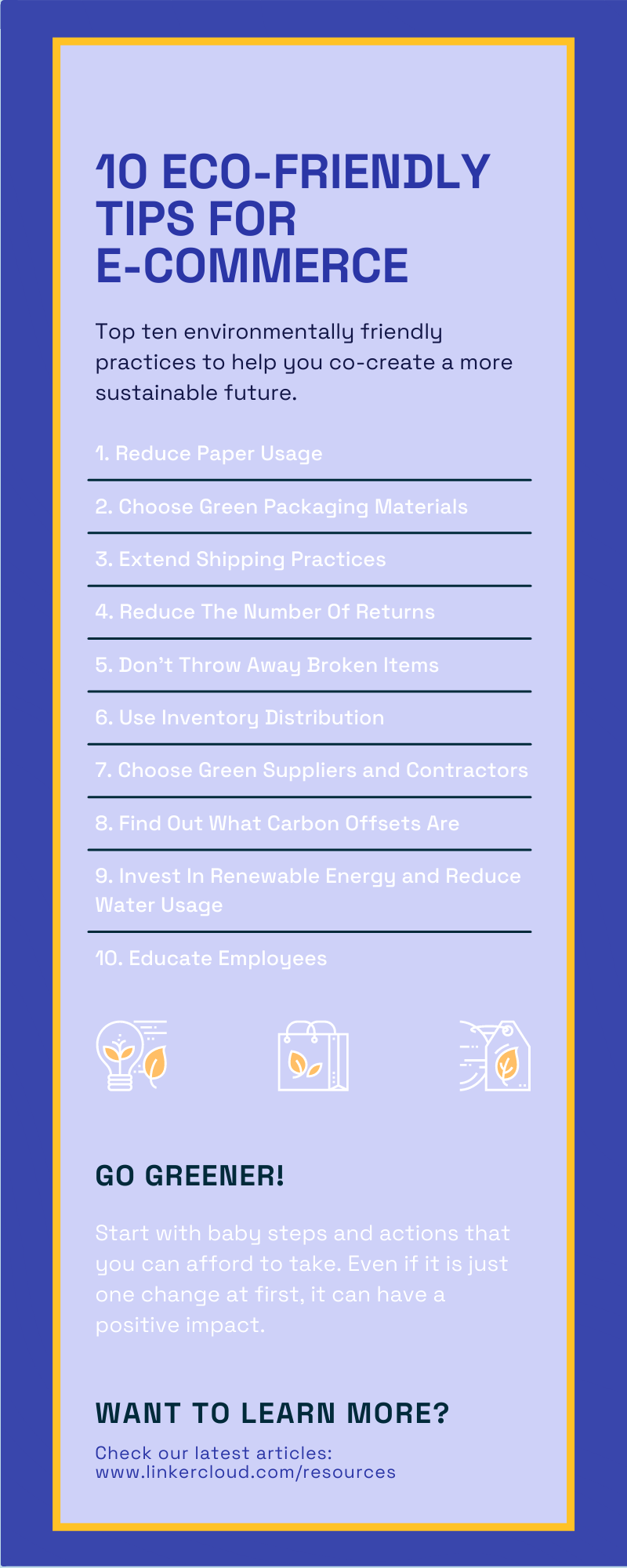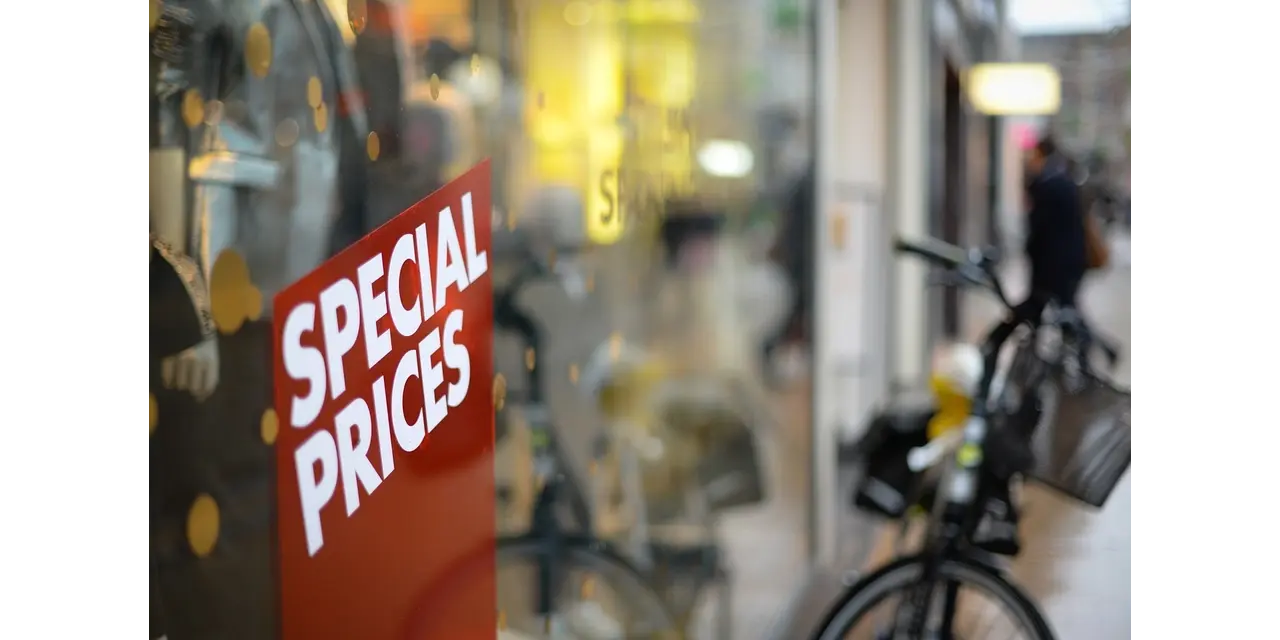In order to answer your request, we are obligated to process the data given above. Sometimes, however, we would like to use them for slightly different purposes, such as statistical data or informing you about our new products and services.We promise that we will use the given information for communication purposes only. We also remind you that you can unsubscribe from our mailing at any time (see Privacy Policy).
The last two years have been a time of compulsory slowing down and looking at environmental issues in a broad context. Consumer awareness is pushing the industry to take even more action. What can be improved from an ecommerce point of view? How to be an eco-friendly online retailer? In this article, we will focus on the key areas of using more sustainable business practices.
What sustainable ecommerce is?
When we talk about sustainable e-commerce, we mean action at different levels of the business which ultimately leads to greater responsibility for the planet. The combination of these efforts will make your online business healthier in the long-term and your brand image closer to the people who share these values and also trying to be eco-friendly. If you're wondering where to start, we've put together a list of 10 environmentally friendly practices to help you look at this issue from different perspectives and co-create a more sustainable future.
One: paper waste
Ecommerce is one of the businesses that can drastically reduce the use of paper. Sending invoices or completing forms for returns can be done electronically. In addition to saving paper, this also speeds up the process and reduces effort on the part of the customer. If for some reason documents have to be prepared in paper form, make sure they are recyclable. Such action is already an example of ethical and sustainable practices.
Two: packaging materials with eco-label
When we talk about packaging with an eco-label, we use wordplay. We are not only concerned with the ecological label, which provides information on the destination of the shipment, but also with the various materials used for packaging.
As one of the biggest environmental problems is plastic, which takes hundreds of years to decompose, we encourage you to eliminate it from the packaging process. The market already offers many interesting substitutes that can effectively protect the goods being shipped and at the same time do not impose a burden on the planet. Every component has its ecological alternative. From fillers and wrapping to tape, bags, and labels, all of these can be replaced by materials that are easy to recycle or that decompose quickly.
Certainly, the higher costs associated with green packaging must be taken into account, but surveys conducted by McKinsey in the US and by the Boston Consulting Group and Trivium Packaging in the US, Europe, and South Africa indicate that around 70% of customers are willing to pay more for green packaging. Therefore, e-commerce businesses should inform clients about the eco-friendly packaging they use.
Three: shipping practices and carbon footprint
We are well aware that our behavior as consumers is geared towards immediate gratification. If we spend money on things that make us happy or that we need, we want to get them as soon as possible - the same day, 24 or 48 hours later. We forget that this express journey of our package costs a lot, especially to mother nature, generating high carbon emissions.
This concept becomes increasingly popular and applies not only to industry but also to us as individuals - the carbon footprint is the total amount of greenhouse gas emissions produced by our activities. We can reduce them by choosing slower delivery methods, among other things. Longer delivery times mean that the frequency of trips by trucks, aircraft, or other modes of transport decreases, thus reducing the environmental impact.
eCommerce customers can be encouraged to use slower forms of transport by introducing discounts or temporary free delivery offers. Giving a choice and explaining what it means reinforces the positive effects of the business.
Four: number of returns
We often say that returns are an integral part of the e-commerce business, there is simply no way to eliminate them. However, we believe that it is possible to reduce their number.
A well-described product page, including dimensions, composition, correct use, good quality photos, or short videos showing how the product works, will ensure that fewer products have to make the same journey twice.
Five: products with flaws
When we are dealing with a product that has been damaged in some way, we can consider several options. If the blemish is visible early on (e.g. a scratch, hole, crack), but it does not affect the usability of the product, we may consider offering it for sale at a reduced price, informing potential buyers about these imperfections.
If a product has been damaged in transit or the defect was noticed later by the customer, it is understood that the product will be returned to the shop. Instead of throwing it away, it is worth looking for a charity that can give it a second life. Often the repair is not too challenging and the product can be used appropriately for those who need it. We delay the production of further waste and contribute to eco-trends.
Six: distributed inventory
When running an e-commerce business, it is worth considering the distribution of supplies to different locations to shorten the distance between the warehouse and the target destination as much as possible.
It is particularly important for long distances, such as shipping to another country or continent, as it helps to reduce the number of parties involved in the transport of the parcel, thereby reducing the carbon footprint. The warehouse is periodically replenished and then the items are delivered by local transport.
Seven: suppliers and contractors
Depending on the size of the business, the number of partners involved varies. From the very beginning, it is worth paying attention to which companies you decide to work with. It is not only about the quality of the services provided, but also about the company's mission and attitude to environmental protection. The drive for sustainable business and eco-friendly behavior is about our actions and also about being aware of what our partners are doing in this area.
Do they use renewable energy sources? Do they use recycled materials? Do they reduce their water consumption? Do they monitor carbon footprint? Maybe they have green certification? These are just a few of the basic questions you should know the answers to when working with a supplier or contractor.
Eight: carbon offsets
The term carbon footprint has appeared several times in our article. However, we must refer to it once again because it is linked to another, increasingly popular concept: carbon offsets.
From the definition given in the third point, it follows that we all leave a carbon footprint. To compensate for its creation, the idea of carbon offsets was born. In simple words, it consists of taking out credits from companies running ecological projects, which use them to finance the planting of trees, to develop renewable energy, or to reduce methane emissions from livestock farming. It is not an expensive solution, to rebalance the carbon footprint produced in a year by the average driver it is enough to buy credits for about 100 dollars.
In eCommerce, you can encourage customers to donate a fair amount to environmental projects by calculating the carbon footprint of the shipment. You can do this explicitly by informing customers that part of the shipping cost goes to carbon offsets, or calculating and donating it by yourself.
Nine: energy and water
Depending on the size of your business and its location, you may decide to use partial or full renewable energy. The initial costs can be high, but they pay off in the long run. It is worth keeping an eye on government information as there may be opportunities for funding in this area.
At the same time, it is useful to control water consumption within the business, as this is also the mark of a true eco-lover.
Ten: employees
When hiring a team, you need to remember that not everyone will have the same environmental attitude as you. Be patient and be prepared to educate your employees on the matter of climate change. They will look to you as a role model, so your words must also complement your actions. The human factor is the most unreliable element in the whole process. However, it pays to build people's awareness and encourage them to apply eco-friendly practices on every level.
Summary
We have put together 10 tips to help you better understand eco-friendly eCommerce business. We know that changes should be made gradually, depending on the size of the company and its level of development. Some of the proposals may seem very difficult for small businesses. So start with baby steps and actions that you can afford to take. Even if it is just one change at first, it can have a positive impact.







